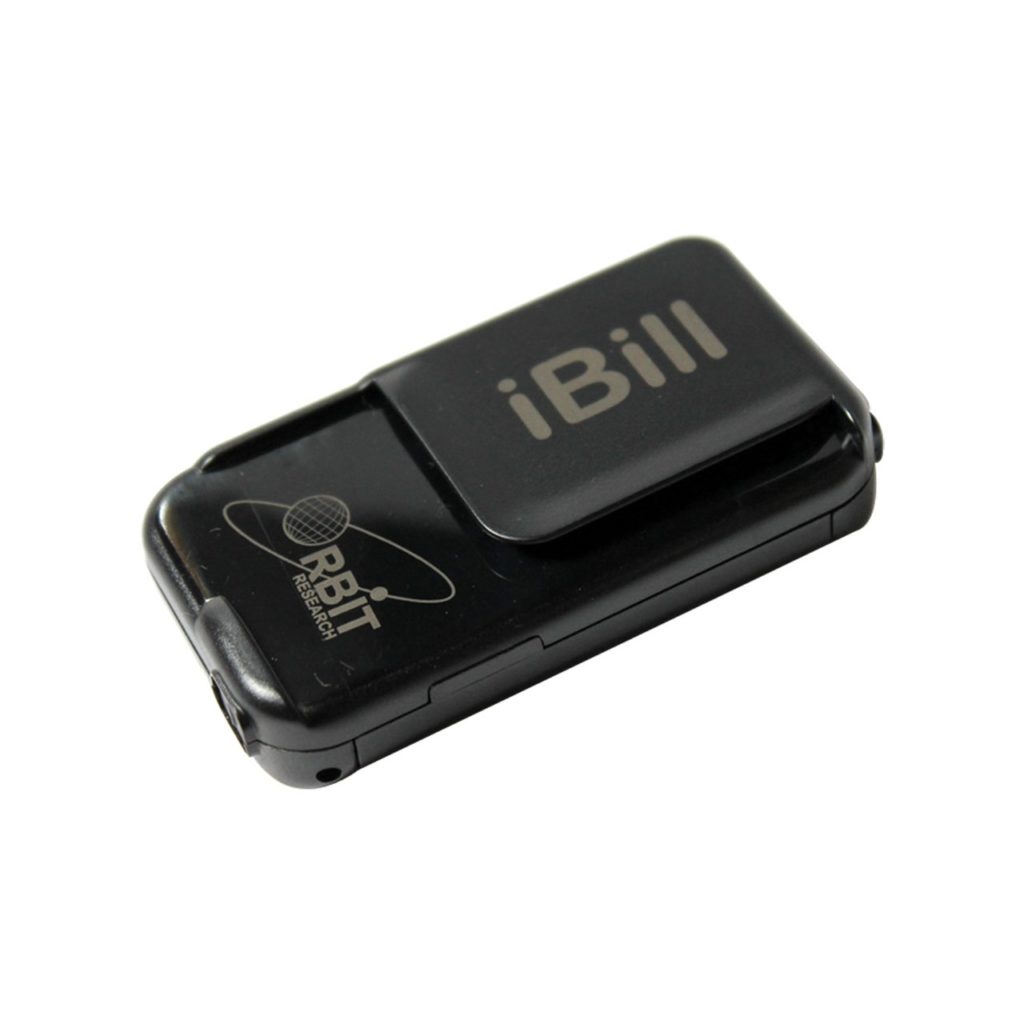The iBill is a small device created to assist users in establishing what value dollar they need identified.
One of the challenges that many people face in the United States when they have a visual disability is how to tell paper money’s value without seeing the printed numbers. Coins are all different sizes representing different values giving a very tactile representation of the amount, paper money however is all the same size, similar in color and texture making it inaccessible. Many people who are blind use specific folding techniques for different dollars, ordering systems when they know what they have been given, or using a credit card whenever possible. However, every human is likely involved in some exchange of paper money throughout their lives. When that happens, knowing you have been given the right amount of change, or you payed the right amount can lead to frustrating social situations, require trusting strangers and limit independence.
Paper money is not designed with all users in mind, subscribing it to the social model of disability. Had money originally been designed with tactile cues then the act of finding the right bill would not create their current currency challenges. This is where assistive technology comes in to help relieve some of these problems. The iBill: Talking Banknote Identifier, is a very small device, designed to scan the corner of money and respond to inform the user what they are carrying. While it can recite the number of the bill aloud, it can also use beeps, vibrations or headphones so the device is not verbally informing surrounding individuals how much the user is carrying. The vibration setting of the device also would allow users who have both hearing and visual disabilities to utilize the product. The device is small and battery operated so it can be used anywhere.
While this device addresses problems created by the social model of disability, because the design flaws in money are at the root of the issue and not the lack of ability from the users, it also addresses other models. It takes on the functional solutions model, having created a very specific piece of technology, to address a very specific task. This technology would not need to be in existence if paper money were to get redesigned with usability in mind. The government offers a free iBill to users with visual disabilities who apply through the Bureau of Engraving and Printing through the Department of Treasury. This object also touches on being that of both a charity and medical model of disability. The government gets to decide who receives the device for free. While there are other devices on the market for purchase, as well as apps that can be used, the government controlling who needs the device adds an extra barrier between someone and their desire to know the information they cannot visually see. If a user cannot receive a free one, for this brand they would have to pay at least $119.00, with additional costs for things like replacement batteries, headphones and a case. All of this adds up when considering this piece of technology only reads American money one dollar at a time. It is generally a helpful assistive technology device, however it’s limits in access and price, as well as its difficulty reading damaged bills poses problems to its potential users’ ability to rely on this device.
Babinszki, Tom; How Blind People Identify Paper Money.
Orbit Research: iBill: Banknote Identifier
U.S. Department of Treasury: Bureau of Engraving and Printing : Meaningful Access Program- U.S. Currency Reader Program
